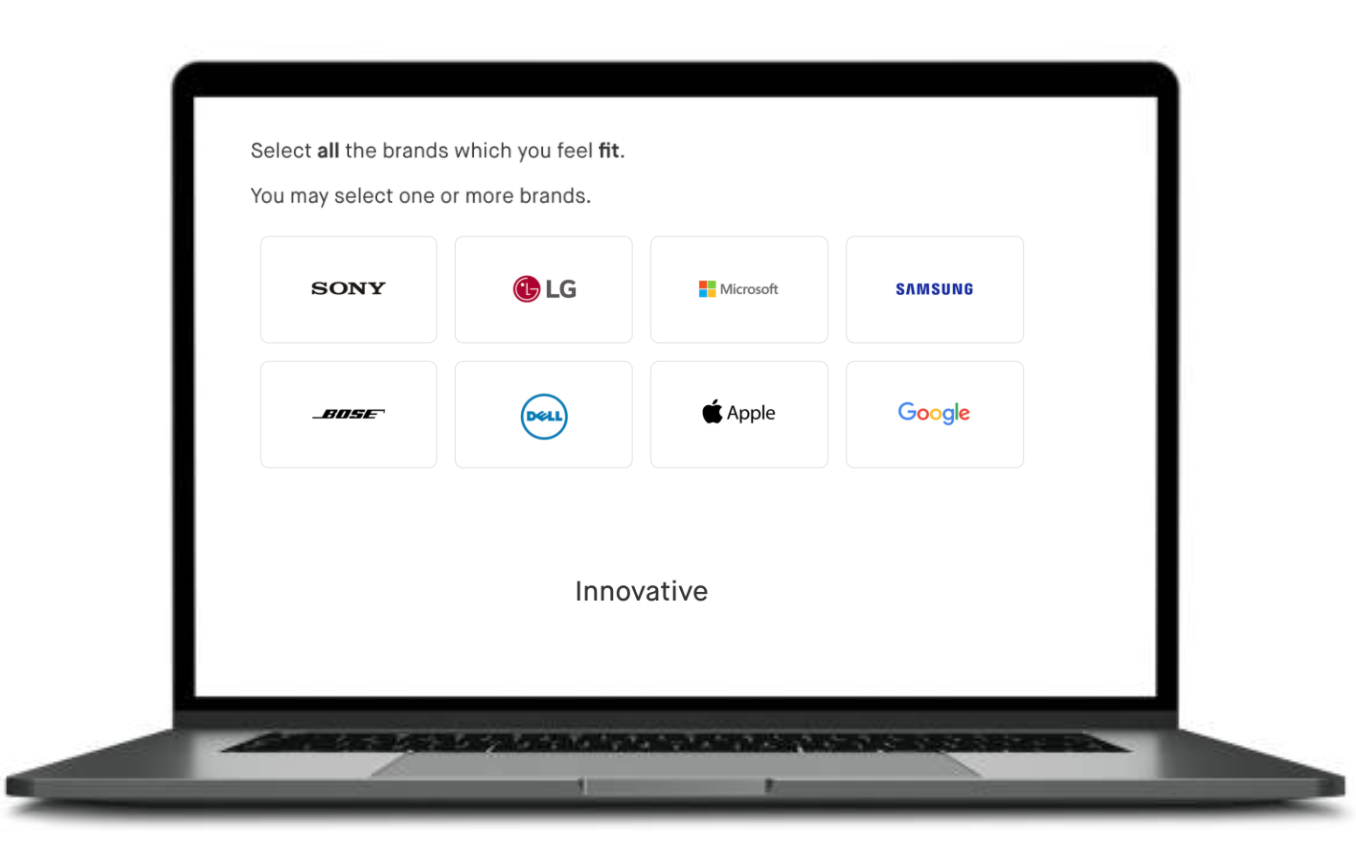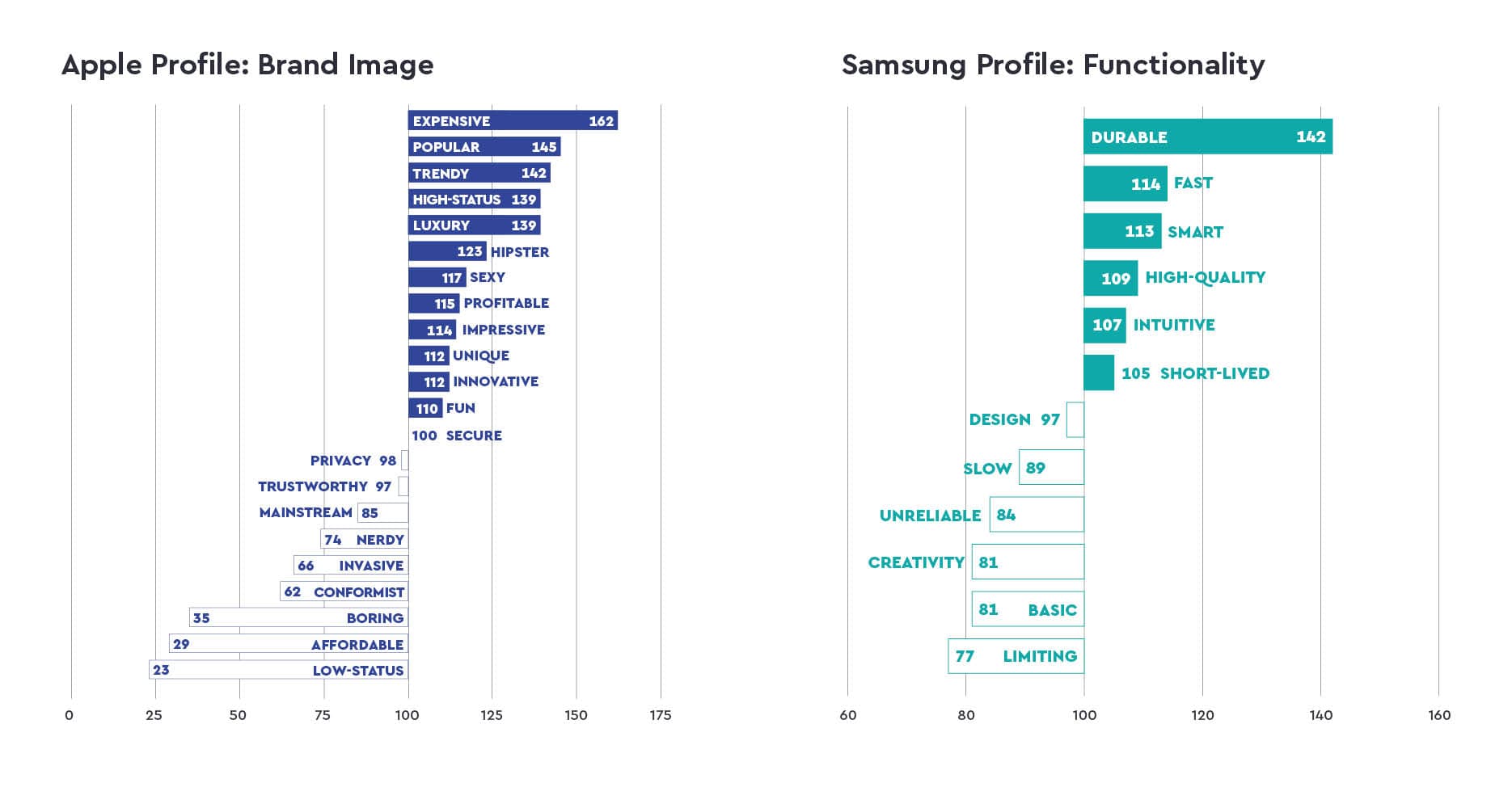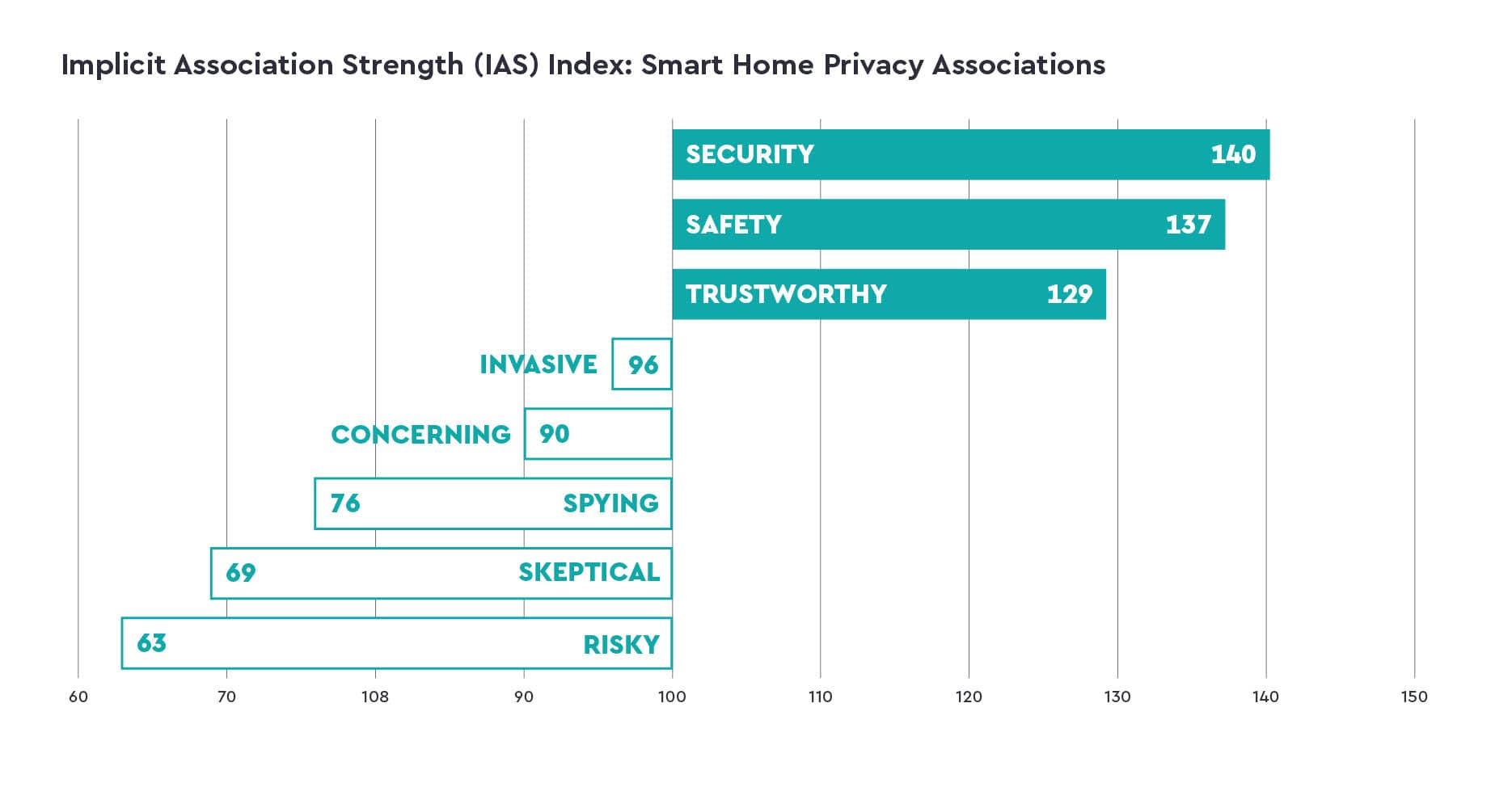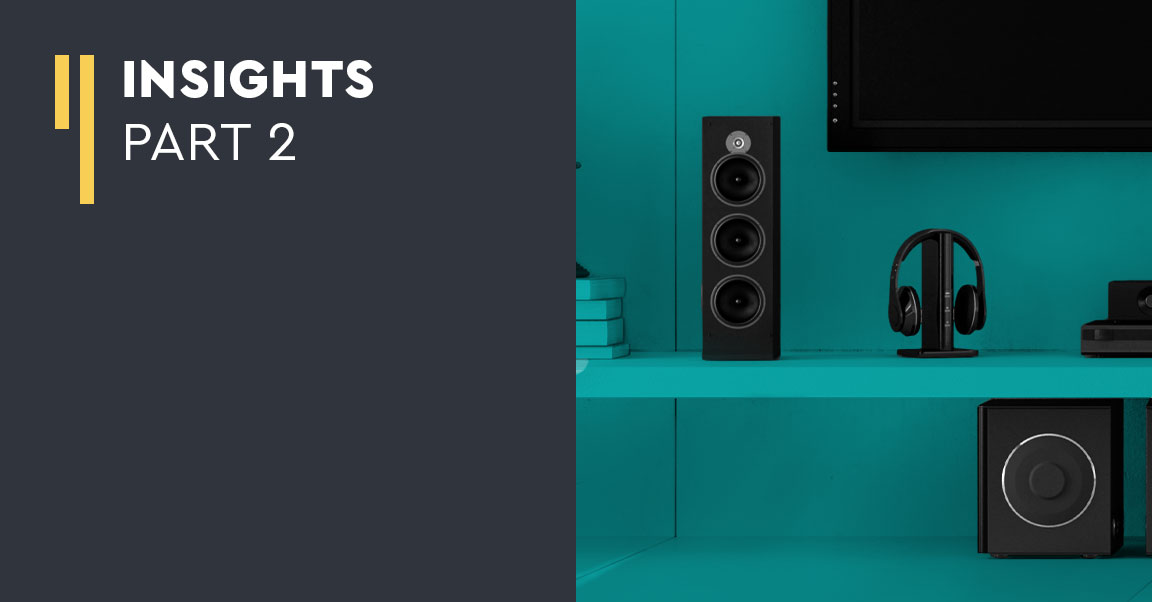In this blog post, covering our 2021 Consumer Electronics study, we explore the findings from our two advanced, implicit testing methods.
We applied an implicit Multiple Association Test (MAT) to measure consumer electronic brand perceptions, as well as an implicit Single Association Test (SAT) around smart home devices. Both advanced methods measure subconscious associations of the topics, diving deeper into consumer minds and providing brands with a glimpse into anticipated behaviors.
Multiple Association Test (MAT):
First, let's take a look at brand perceptions in the consumer electronics device space. We measured perceptions of eight different brands: Apple, Bose, Dell, Google, LG, Microsoft, Samsung, and Sony.
To understand how these brands are perceived both individually and as part of a brand portfolio, the MAT shows respondents a series of associations and asks which of the eight brands 'fit' with that word. Responses are then weighted on reaction time, so the faster a respondent selects a brand that 'fits' with an associated word, the stronger that association is. Below is an example of what this testing environment looks like:

From this MAT, Apple emerged as the consumer electronics brand that consumers have the most associations with overall, but not necessarily the most differentiating ones. Although Apple was selected most frequently, other brands stand out for unique characteristics with regard to functionality, design, and brand image. Below is a glimpse of some of the MAT results for Apple and Samsung, with all other brand associations available in the dashboard download below.

Single Association Test (SAT):
As for smart home associations, we wanted to know how consumers perceive smart home devices, regardless if they own one (or intend to). Similar to the MAT around consumer electronics brands, we asked consumers how well certain words 'fit' with smart home devices. These associations range from privacy elements (such as 'security' and 'invasive') to general elements around these types of devices (such as 'expensive' and 'entertaining'). And like the MAT, responses are weighted by response time.
As shown below, when it comes to the topic of privacy, smart homes are strongly associated with 'security', 'safety', and 'trustworthy'. These three associations, shown to the right of the index (>100) indicate stronger associations than the average response (unlike elements such as 'skeptical' or 'risky').

For additional findings from our MAT and SAT methods in this consumer electronics study, as well as general consumer electronics metrics, shopping behaviors, and a dive into the wearables market, check out our full dashboard below.




.png)